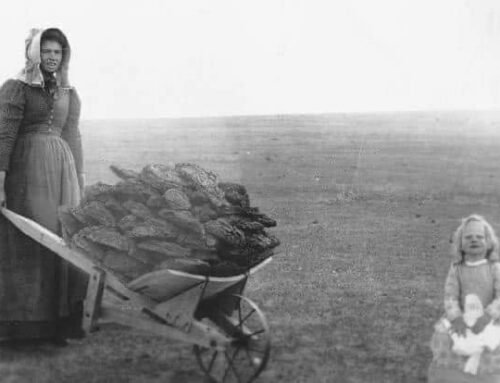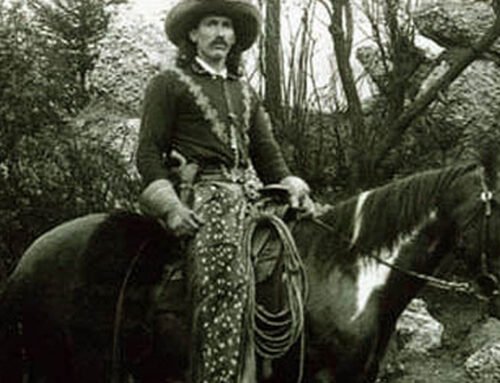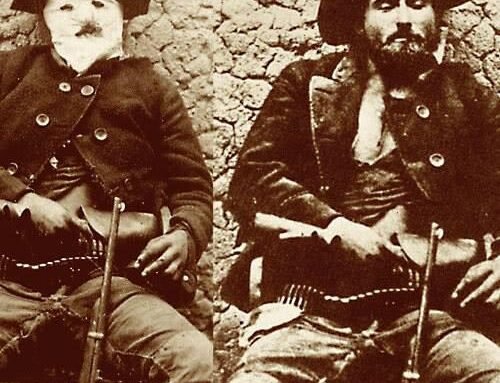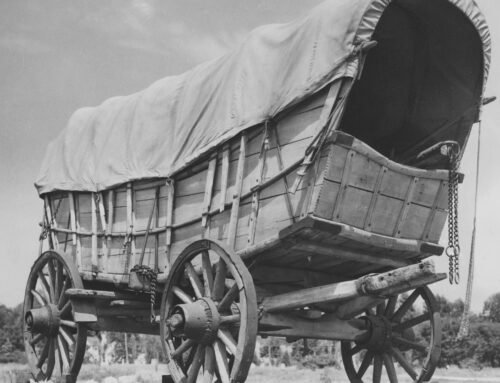1861 Armored Prairie Schooner
By western author Nick Brumby
“Two horses should git ‘er there in half the time of one.”
—Missouri inventor Zeke Mycarsarustbucket peers out of the window of his revolutionary 1861 armored prairie schooner.
Zeke, a blacksmith, designed the vehicle in a blinding fit of rage after his own prairie schooner burned to a pile of ashes following an incident with a bath candle during an attack by a Crow war party.
 He locked himself in with his forge and did not sleep for three days while building his ground-breaking wagon. Obsessed with building the strongest possible vehicle, he stripped back a neighbour’s prairie schooner to its chassis and fashioned a new armored cabin from the only material he had available – a cast iron water boiler.
He locked himself in with his forge and did not sleep for three days while building his ground-breaking wagon. Obsessed with building the strongest possible vehicle, he stripped back a neighbour’s prairie schooner to its chassis and fashioned a new armored cabin from the only material he had available – a cast iron water boiler.
Zeke nicknamed his creation a ‘tank’, but soon abandoned this name when he added extra ground clearance to assist with river crossings. In honor of this innovation, he instead christened his vehicle a ‘ford’.
Other innovations included replacing the standard leather tack with heavy-duty chains, puncture-proof solid iron wheels, a map glued to a wooden globe to assist with navigation, and a reel of telegraph wire feeding out of the back window and back to the nearest town in case Zeke needed to SOS for assistance.
Zeke’s hometown of Jacksonville turned out in a festival-like atmosphere on 1 April 1861 for the grand reveal, but it proved an initial disappointment – Zeke’s armored prairie schooner didn’t move an inch despite his horse’s best efforts. The Ford was just too danged heavy.
Zeke added a second horse and expanded his horizons. After the Pony Express bypassed his hometown of Cadillac, he planned to launch a rival mail delivery service that would put the Express out of business.
While the Pony Express employed eighty riders, 190 way stations, and 500 horses, Zeke hatched a bold plan for success. The Pony Express travelled between St Louis -California in 13 days – Zeke promised to do it in five days, by eliminating the way stations and overnight stops and doing it all himself. As he said, “two horses should be able to do the trip in half the time of one”.
After a successful second trial where Zeke’s Ford hit a top speed of four miles per hour, he quickly launched his first trip during a raging snowstorm, his costs underwritten by a US government contract to transport $50,000 in greenbacks to California.
Sadly, the Ford broke down soon after its first river crossing, and Zeke was forced to burn the cash in an attempt to stay warm and survive the cold. He eventually gave up and retreated to his forge in defeat, leaving his Ford behind.
After a long cold winter Zeke ventured back to the river to repair his vehicle and continue his journey. However, he found no sign of his Ford, other than traces of rust in the wheel ruts leading away from the river.
Each April 1st since that day the citizens of Cadillac, Missouri, commemorate Zeke’s glorious failure by burning handfuls of money during their annual ‘Ford festival’.

About Nick Brumby
I like a good story. And of all stories, I love westerns the most.
As a kid, I spent far too many afternoons re-watching Clint Eastwood spaghetti westerns, picking up ‘Shane’ for just one more read, or saddling up beside Ben Cartwright when ‘Bonanza’ was on TV each afternoon.
I’m a former journalist and I love horses, dogs, and the occasional bourbon whiskey. I live with my wife, daughter and our ever-slumbering hound in a 1800’s-era gold mining town – our house is right on top of the last working gold mine in the area. There may not be much gold left, but there’s history wherever you look.
I hope you enjoy my westerns as much as I enjoyed writing them!
Happy trails,
Nick



























